#Dukkha (Suffering)
Explore tagged Tumblr posts
Text
The Philosophy of Buddhism
Buddhism is a spiritual and philosophical tradition that originated in India around the 5th century BCE with the teachings of Siddhartha Gautama, known as the Buddha. Buddhism encompasses a wide range of beliefs, practices, and schools of thought, but at its core, it is concerned with understanding the nature of suffering, the path to its cessation, and the ultimate realization of enlightenment.
Key Themes in the Philosophy of Buddhism:
The Four Noble Truths:
Dukkha (Suffering): The first noble truth is the recognition that life is permeated by dukkha, often translated as suffering, dissatisfaction, or stress. This includes both the obvious sufferings of pain, aging, and death, as well as more subtle forms of mental unease and dissatisfaction.
Samudaya (Origin of Suffering): The second noble truth identifies the cause of suffering as tanha (craving or desire) and ignorance (avidya). This craving is not only for physical pleasures but also for existence, non-existence, and various forms of attachment.
Nirodha (Cessation of Suffering): The third noble truth asserts that it is possible to end suffering by extinguishing its causes, namely craving and ignorance. This state of cessation is known as Nirvana, which represents the ultimate liberation from the cycle of rebirth and suffering.
Magga (Path to the Cessation of Suffering): The fourth noble truth outlines the path to the cessation of suffering, known as the Noble Eightfold Path. This path provides a practical guide to ethical living, mental discipline, and wisdom.
The Noble Eightfold Path:
Right Understanding (Samma Ditthi): This involves understanding the true nature of reality, particularly the Four Noble Truths.
Right Intention (Samma Sankappa): Cultivating intentions of renunciation, goodwill, and harmlessness.
Right Speech (Samma Vaca): Speaking truthfully, avoiding gossip, lies, and harmful speech.
Right Action (Samma Kammanta): Acting in ways that are ethical and non-harmful, following principles like non-violence and honesty.
Right Livelihood (Samma Ajiva): Engaging in work that does not harm others and is ethically sound.
Right Effort (Samma Vayama): Cultivating positive states of mind and preventing unwholesome states.
Right Mindfulness (Samma Sati): Maintaining awareness of thoughts, feelings, and actions, leading to greater self-understanding and wisdom.
Right Concentration (Samma Samadhi): Developing deep states of meditation that lead to profound insights and the cultivation of wisdom.
The Three Marks of Existence:
Anicca (Impermanence): Everything in life is in a constant state of flux. All phenomena are transient, and clinging to anything as permanent leads to suffering.
Dukkha (Suffering): Suffering is an inherent part of existence, arising from the impermanent and unsatisfactory nature of life.
Anatta (Non-Self): There is no permanent, unchanging self or soul (atman). The belief in a permanent self is an illusion that contributes to suffering.
Karma and Rebirth:
Karma (Action and Consequence): Karma refers to the moral law of cause and effect, where intentional actions lead to corresponding consequences. Good actions lead to positive results, and bad actions lead to negative outcomes, both in this life and future lives.
Rebirth (Samsara): Buddhism teaches that beings are trapped in a cycle of birth, death, and rebirth (samsara), driven by karma and craving. The ultimate goal is to escape this cycle by attaining Nirvana.
Nirvana:
Liberation from Suffering: Nirvana is the ultimate goal in Buddhism, representing the cessation of all suffering, the end of the cycle of rebirth, and the realization of ultimate truth. It is a state of peace, liberation, and enlightenment.
Beyond Dualities: Nirvana transcends all dualities and conceptual distinctions, including the dichotomy of existence and non-existence.
Meditation and Mindfulness:
Central Practices: Meditation (bhavana) and mindfulness (sati) are central practices in Buddhism, aimed at cultivating concentration, insight, and mental clarity. These practices help individuals develop a deep understanding of the nature of reality and the mind.
Vipassana and Samatha: Two main types of meditation in Buddhism are Vipassana (insight meditation), which focuses on gaining insight into the true nature of reality, and Samatha (calm-abiding meditation), which develops concentration and tranquility.
The Middle Way:
Avoiding Extremes: The Buddha taught the Middle Way as a path that avoids the extremes of self-indulgence and self-mortification. It represents a balanced approach to spiritual practice that leads to enlightenment.
Practical Wisdom: The Middle Way also refers to the balanced application of wisdom in everyday life, guiding ethical conduct and mental development.
Dependent Origination (Pratītyasamutpāda):
Interconnectedness of All Phenomena: Dependent origination is the principle that all phenomena arise in dependence upon other phenomena. This interconnectedness means that nothing exists independently, and everything is part of a complex web of cause and effect.
Causality and the Cycle of Suffering: Understanding dependent origination is key to understanding the cycle of suffering (samsara) and how to break free from it.
Ethical Conduct:
The Five Precepts: Buddhism provides a set of ethical guidelines known as the Five Precepts, which include abstaining from killing, stealing, sexual misconduct, lying, and intoxication. These precepts help cultivate moral discipline and support the path to enlightenment.
Compassion and Loving-Kindness (Metta): Compassion (karuna) and loving-kindness (metta) are central ethical values in Buddhism, encouraging individuals to act with care and concern for the well-being of others.
Schools of Buddhist Philosophy:
Theravada Buddhism:
Focus on Early Teachings: Theravada, also known as the "Teaching of the Elders," adheres closely to the early teachings of the Buddha and emphasizes individual liberation through wisdom and ethical conduct.
Arhat Ideal: The goal in Theravada is to become an Arhat, an enlightened being who has attained Nirvana and is free from the cycle of rebirth.
Mahayana Buddhism:
Great Vehicle: Mahayana, or the "Great Vehicle," offers a broader interpretation of the Buddha's teachings and emphasizes the Bodhisattva path, where practitioners strive to attain enlightenment for the benefit of all beings.
Emptiness (Shunyata): Mahayana philosophy introduces the concept of emptiness, which suggests that all phenomena are empty of inherent existence, highlighting the interdependence and impermanence of all things.
Vajrayana Buddhism:
Diamond Vehicle: Vajrayana, or the "Diamond Vehicle," is an esoteric form of Buddhism that incorporates rituals, mantras, and meditation practices aimed at achieving rapid enlightenment. It is closely associated with Tibetan Buddhism.
Tantric Practices: Vajrayana involves complex tantric practices that are believed to transform the mind and body, leading to enlightenment.
The philosophy of Buddhism is a profound exploration of the nature of existence, suffering, and the path to liberation. Through its teachings on impermanence, non-self, dependent origination, and the cultivation of compassion, Buddhism offers a comprehensive framework for understanding and overcoming the challenges of life. Its emphasis on mindfulness, ethical conduct, and wisdom provides practical guidance for achieving inner peace and spiritual awakening. Whether through individual practice or engagement with the broader community, Buddhism continues to inspire and guide people in their quest for meaning, peace, and liberation.
#philosophy#epistemology#knowledge#learning#education#chatgpt#ontology#metaphysics#ethics#Buddhism#Four Noble Truths#Noble Eightfold Path#Dukkha (Suffering)#Anicca (Impermanence)#Anatta (Non-Self)#Karma and Rebirth#Nirvana#Meditation and Mindfulness#Middle Way#Dependent Origination#Theravada Buddhism#Mahayana Buddhism#Vajrayana Buddhism#Engaged Buddhism#Buddhist Ethics#Buddhist Philosophy#Bodhisattva Path#Compassion (Karuna)#Loving-Kindness (Metta)#Mindfulness (Sati)
42 notes
·
View notes
Text

"Gurdjieff asked if any of us had a special Saint to whom he might burn a candle." (On the first suggestion he shook his head. He knew all about that one) "No, he said. It must be a Saint that would be indulgent for one of us. One of us in the Work... you, me... Canary, Thin One... His eyes searched our blank faces, then he shrugged." "If you cannot suggest such a one", he said, "I could just as well take my own Saint - Saint George. But he is a very expensive Saint. He is not interested in money, or in merchandise like candles. He wishes suffering for merchandise, an inner-world thing. He is interested only when I make something for my inner world; he always knows... But such suffering is expensive..."
~ Kathryn Hulme, 'The Undiscovered Country (Paris 1934)
[Thank you Ian Sanders]
8 notes
·
View notes
Text
"There is one very Buddhist part of [The White Lotus, season three], however: its plot. The Buddha taught that our suffering is self-created, and the characters are caught in a web of truly self created suffering. Their incredible wealth and privilege and comfortable surroundings — replete with every kind of mental and physical therapy — only help to illustrate the fact that the suffering that they’re living through is entirely of their own design.
The characters are enmeshed in greed, hatred, and delusion, which are known to Buddhists as the three poisons. And the characters manage to violate the five traditional Buddhist training precepts in their behaviour. The five precepts, whose disregard is said to bring harm and regret, are not killing, not stealing, not lying, not committing sexual misconduct, and not taking intoxicants. The characters murder, steal, lie, engage in sexual misconduct, and abuse alcohol and drugs, often all within the space of a few minutes.
Tim Ratliff, for example, committed fraud (greed) and is now losing his mind from fear of the consequences (hatred), which he is escaping in sedatives and whisky (delusion). It was stealing that landed him in this situation (second precept) and his lying (third) and substance abuse (fifth) are prolonging the crisis. His son, Saxon, driven by sexual greed and shallow egotism (delusion), leads himself and his brother into trouble with his obsession with unethical sexual conquest (fourth precept), fueled by alcohol and drugs (fifth), which ultimately culminates in incest (fourth). And so on.
One of the driving tensions of the plot is also authentically Buddhist: will the characters succumb to the urge to be violent or not? Will Tim kill himself, or even his whole family? Will Greg, a wife-killer in hiding, kill Saxon, who he thinks slept with his wife, or Belinda, who knows of his crime? Will Rick kill the man he believes murdered his father? Will Gaitok succumb to Mook’s pressure to be ambitious and violent for the sake of career advancement?
This last tension animates a tragic Buddhist tale embedded in one of the flashier plot lines of this season: that of Gaitok and Mook. Gaitok is a mild-mannered security guard who avoids confrontation and violence. He is infatuated with Mook, a beautiful Thai girl who herself has more of a thing for the burly tattooed bodyguards who shadow the hotel’s owner. Gaitok attempts to be more aggressive, to get a promotion to please Mook, although he confesses to her that he thinks violence was condemned by the Buddha and is wrong. Ultimately, Gaitok shoots a fleeing murderer dead, thus winning a promotion and Mook’s love. Their mutual disregard for his true, more honorable character promises a life of future misery for them both.
In another scene, the brutality of muay-Thai boxing is juxtaposed with a voice-over of the ajaan saying, 'Remember this: every one of us has the capacity to kill. Buddhist scripture condemns violence in every form. Violence, aggression, anger, stem from the same source: fear. The only good faith response is to sit with your feelings. Violence does spiritual harm to the victim and the perpetrator. Buddhists believe: always non-violence.'
If I knew nothing about Buddhism watching The White Lotus, I would come away with the idea that it is a peaceful religion that promotes stilling the mind, non-violence, and acceptance of life as it is, and whose meditation teachings are commensurate with the pop-mindfulness stuff one can hear in any yoga class or meditation app. I would also believe that it promotes spirit above form, and detachment from self, and that it promises that all beings come from one universal consciousness to which they will return at death in a peaceful homecoming. Not the worst presentation of Theravada Buddhism, to be sure, but far from a wholly accurate one.
When it comes to the plot, however, the show delivers Buddhist insights in spades, serving up hefty doses of teaching about the perils of violence, along with the poisonous nature of greed, hatred, and delusion and the chaotic consequences of killing, stealing, lying, unethical sex, and intoxicants. The show might not be true to Thai Buddhism, but it’s true to life."
- Matthew Gindin, from "The Buddha In 'The White Lotus,'" Arc, 8 April 2025.
#matthew gindin#quote#quotations#the white lotus#white lotus spoilers#buddhism#suffering#dukkha#storytelling
8 notes
·
View notes
Text
The Power and Peril of the Mind: A Multidisciplinary Exploration
The human mind is an extraordinary instrument, capable of shaping reality, constructing complex ideas, and adapting to a vast range of experiences. Photo by KATRIN BOLOVTSOVA on Pexels.com Yet, paradoxically, it is also the source of immense suffering when left untamed. This short post will explore this concept through the lenses of Stoicism, Buddhism, modern psychology, and neuroscience,…

View On WordPress
#aversions#Bhavana#bodhicitta#brain#Buddhism#Buddhist philosophy#buddhist wisdom#desires#Dukkha#illusions#Marcus Aurelius#meditation#Metta Bhavana#Mind#mindfulness#Neuroscience#Philosophy#prajñā#Psychology#Raffaello Palandri#Sati#Stoic philosophy#Stoic wisdom#Stoicism#suffering#vipassanā#wisdom
2 notes
·
View notes
Text
i will escape the cycle of rebirth when they get rid of oreos and nicotine and pretty transgender girls, until then i am fated to return again
#mental illness#random#negative karma#dukkhaposting#dukkha#adam and eve disobeyed the lord and now i must suffer
0 notes
Text
The Path To Enlightenment
In bumbling through YouTube last night, I happened upon an extraordinary video. I say ‘extraordinary’ because the information it conveys is so unusually lucid – particularly given the subject of the video is one that is often misinterpreted and left unclear. The video covers the four Noble truths of the Buddhist path: the way to Nibbana – or enlightenment – and it’s well worth…
youtube
View On WordPress
#awareness#calm#dukkha#enlightenment#meditation#mindfulness#nibbana#stillness#suffering#vipassana#Youtube
0 notes
Text
Anticipated Suffering
There are more things, Lucilius, likely to frighten us than there are to crush us; we suffer more often in imagination than in reality. Seneca, Letters from a Stoic Speaking with my son on the way back home on the train, I had occasion to share the quote above. I had often seen it quoted but had never felt the need to ponder it more deeply or share it. At that moment, however, it seemed…

View On WordPress
0 notes
Text

“I just wanna go to the beach at night just to listen to the waves.”
[P e a c e]
* * * *
"It is better to say, “I am suffering,” than to say, “This landscape is ugly.”" ~ Simone Weil
17 notes
·
View notes
Text
Cute Sky Clouds - Landscape Storm - Suchness Thusness
Awakening leads us to see tathata that's suchness or thusness.
When tathata is seen: annica (impermanence) , dukkha (suffering) , anatta (Not-Self) , sunnata (Emptiness Void) , and idappaccayata (laws of causation) are seen.
Realization of Tathata leads to Nirvana.
- Dr Devang H Dattani
- Infinite SriSriSri DDD
See beautiful cloudy sky lightning landscape video
Good Morning
Quote / Poem / Poetry / Quotes Of
Bhagwan Sri Sri Sri
Doctor Devang H Dattani
Infinite Sri Sri Sri DDD
Posted By TheBlissCity DDD Team
See The Media Photo Video For
Quoteoftheday
God Morning
#nature , #artists , #bliss , #TheBlissCity , #philosophy , #mindfulness , #DrDevangHDattani , #nature , #awareness , #InfiniteSriSriSriDDD , #quotes , #life , #art , #zen , #awakening , #quote , #spirituality , #photography , #Video , #meditation , #psychology , #poem , #poetry , #motivation , #inspiration , #quoteoftheday , #love , #words , #thoughts , #joy , #pun , #enlightenment , #health , #mental health , #consciousness , #good , #god , #life , #thoughts , #tantra , #yoga , #soul , #esoteric , #mystic , #spirit , #spirituality , #magic , #cottagecore , #aesthetics , #world , #photooftheday , #painting , #landscape , #panorama , #illustration , #wild life , #animals , #nature , #funny , #play , #birds , #human , #photography , #video , #pun , #fun , #laugh , #cute , #animal , #panorama , #wellness , #wellbeing , #sky , #clouds , #lightning , #annica , #dukkha , #anatta , #sunnataa , #idappaccayata , #tathata , #Nirvana , #thusness , #suchness
#cute#quotes#sky#clouds#storm#nature photography#artists on tumblr#eurovision#undertale#motivation#spirituality#illustration#love#my art#TheBlissCity#DrDevangHDattani#InfiniteSriSriSriDDD#landscape#photography#nature#video#philosophy#thoughts#writing#art#poetry#life#words#spilled ink#meditation
52 notes
·
View notes
Text
Transcending Limits: The Path to True Freedom Through Impermanence, Compassionate Mindfulness, and Wisdom
Human existence is often constrained by self-imposed limitations, attachments, and suffering. Photo by Snapwire on Pexels.com However, through a deep recognition of impermanence, the cultivation of compassionate mindfulness, and the alignment of our actions with wisdom, we can transcend these limitations, fostering joy and achieving a profound form of freedom. This journey is neither…

View On WordPress
#Anatta#anicca#attachments#Bhagavad Gita#Buddha#Buddhism#Buddhist philosophy#buddhist wisdom#commitment#continuous practice#Dukkha#freedom#Grow#Growth#impermanence#introspection#limitations#Marcus Aurelius#mindfulness#non-self#Philosophy#Raffaello Palandri#Sati#Stoic philosophy#Stoic wisdom#suffering#Three Marks of Existence#Tilakkhana#wisdom
2 notes
·
View notes
Text
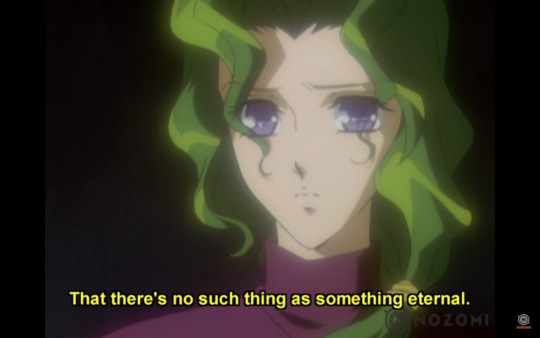
So, lets now come to the next topic. This moves us away from Hinduism and into Buddhist territory. This sentence is one of the 3 Main charscteristics of the World according to Buddhism.
In Buddhism, the world has 3 Main Features, anata, anicca and dukkha. Meaning that there is nothing Staying constant, nothing which lasts eternal and the World will always have suffering.
(Ironically, in Utena, this sentence of nothing lasts eternal later ends with "but there is always suffering")
In Buddhism, these Main Features of the world are responsible for time becoming a cycles, or to say it otherwise, a Revolution.

But why does this lead to suffering: via the 3 poisons: hatred, delusion and greed

Delusion here is also meant as a desire of self deception and clinging to illusions and delusions despite the knowledge of them being false. In Buddhism, people are trapped in a world of illusions because they do not want to leave that world. Due to that, in the end, Utenas decision to leave the world of illusions and the cycle was the only right thing because there, she won against the poison.
Interestingly, in Buddhism, the path to free yourself from the 3 poisons is called a "vehicle". Like for example "diamond vehicle". Maybe this is meant by Utena turning into a car.
The whole Buddhist theory of suffering is also connected to the term of Sunyata which is important in the Kyoto School and post ww2 japanese philosophy. The kyoto school was a group of philosophers studying in germany under Martin Heidegger.

They combined Buddhism and heideggerian philosophy. Heidegger thought the main emotion of all humans is fear/anxiety and everything humans do is a rejection towards fear. Fear is connected to our mortality and to the fact that humans must choose actions but every action can have devastating consequences which are not always plannable but humans are always responsible for everything they do.
The kyoto school used heideggers theories and added the Buddhist idea of Sunyata. Sunyata means absolute nothingness. Absolute nothingness is in contrast to relative nothingness. Relative nothingness is basically lack and a nothingness where it's clear what is missing. Sunyata is a nothingness where it's unclear what is missing or if something is missing. And this causes fear. (Like the saying goes "you are not afraid that you are alone in a dark forest. You are afraid that you might not alone in the dark forest and that something is lurking there.
And sunyata also means everything in the world will be destroyed someday and is running towards its own destruction. (Absolute destiny apocalypse, like the name of this song.)
But everything humans achieve and do and accomplish is a reaction to the thought of sunyata. Absolute nothingness creates everything.
The sunyata theory and its influence is one reason why anime loves the apocalypse as a topic.
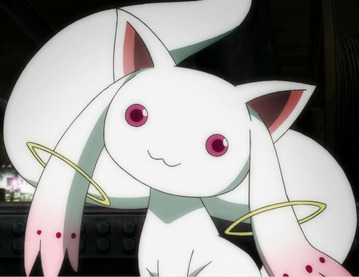
This Buddhist cosmology is related to the idea of entropy and self escalating chaos. Basically every possible way to fight against entropy causes more entropy and more chaos.
This is where the idea of Taoism, that the wise man does everything needed to be done by doing nothing and the idea of the immovable mover come into play. This all basically refers to the wise man as someone who avoids unnecessary entropy and who does not need to do more because of this.

As Kyubei points out, Homura is trapped in an eternal cycle of suffering due to her unwillingness to give up her desire to somehow save Madoka.
Interestingly, the Ending theme of madoka magica contains "its because you yearn with greed, even through your heart may bleed" a fitting line.
#utena tenjou#shoujo kakumei utena#revolutionary girl utena#puella magi madoka magica#analysis#occult symbolism#occultism#anime#homura akemi#buddhism#heidegger#kyoto schools#kyoto school#keiji Nishitani
44 notes
·
View notes
Text

Dukkha is a Pali word that means "suffering," "unsatisfactoriness," or "discontentment". It's a fundamental concept in Buddhism and one of the Four Noble Truths.
35 notes
·
View notes
Text
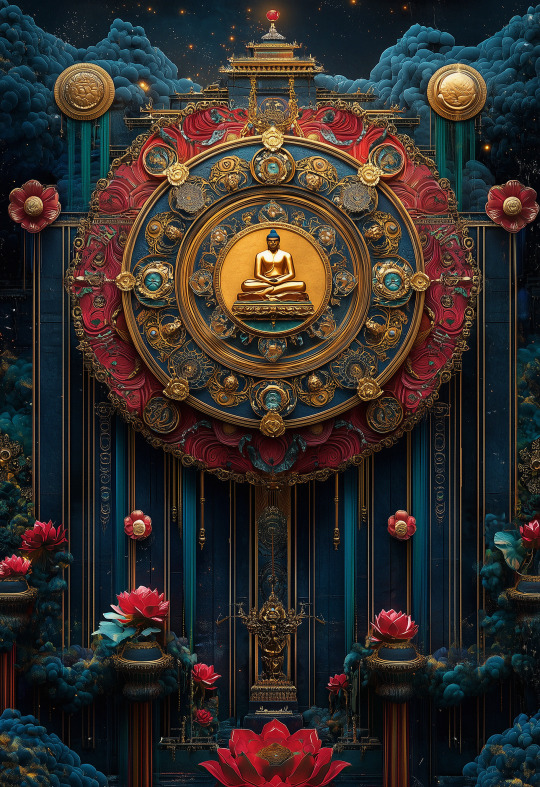
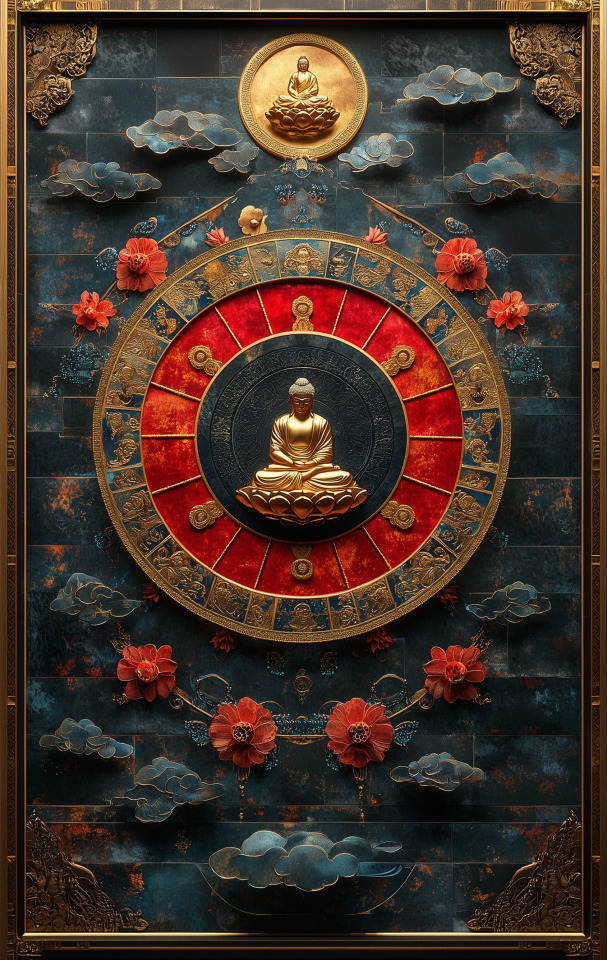
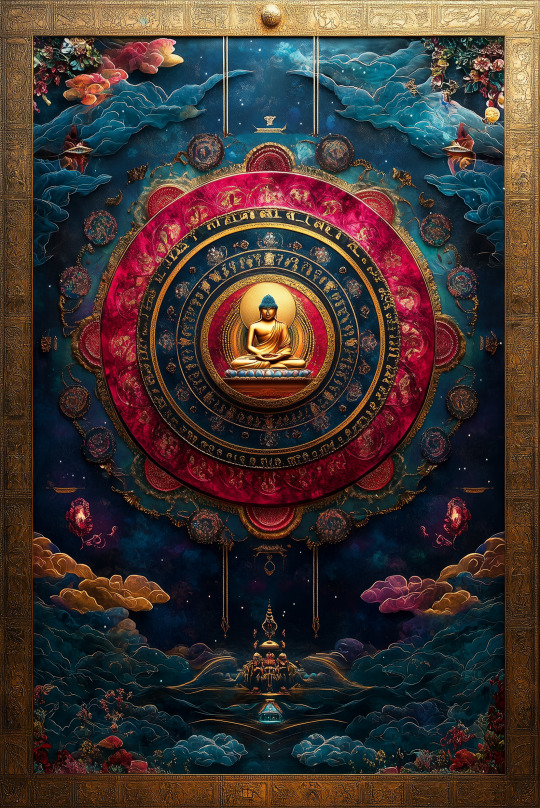
“The path of love is the path of enlightenment.” - Gautama Buddha
Samsara - Bhavachakra Talon Abraxas
Samsara is the cycle of life: birth, death, and rebirth in which suffering beings are trapped. Freedom from samsara is known as nirvana, a state of perfect peace and freedom from struggle that is beyond birth and death.
In Buddhist cosmology, samsara (Sanskrit, “cycle of existence”) serves as the framework for understanding the nature of suffering and how to escape it. Buddhist practice helps us understand and transcend one’s imprisonment in samsara and its suffering.
The fundamental cause of samsara is our ignorance about the actual nature of ourselves and the reality we experience. Mistakenly believing phenomena to be solid, independent, and permanent, we generate the three poisons of anger, greed, and indifference to protect ourselves, causing suffering and creating negative karma that perpetuates samsara.
Endless Cycle
Samsara represents an endless and repetitive cycle of existence. Individuals are born into various forms of life, experience suffering and pleasure, die, and are reborn again in a different form. This cycle continues until one attains enlightenment and transcends birth and death.
Karma
The cycle of samsara is driven by the law of karma, the principle of cause and effect. One’s actions and intentions have effects not only in this life, but in future rebirths. Both right now and in future lives, positive actions are understood to lead to favorable circumstances, while negative actions lead to less favorable ones.
Suffering and Unsatisfactoriness
Samsara is characterized by suffering (dukkha) and unsatisfactoriness. Life in any realm is subject to various forms of suffering, including physical and mental pain, attachment, and impermanence.
Liberation and the Eightfold Path
The ultimate goal in Buddhism is to attain liberation from samsara, known as nirvana. Nirvana is a state of complete freedom from suffering. It is a state of awakening and realization of the true nature of reality.
The Eightfold Path is the historical Buddha’s teaching on the path to liberation from samsara. It consists of ethical and mental practices, including right understanding, right intention, right speech, right action, right livelihood, right effort, right mindfulness, and right concentration. By following this path, individuals can break free from the samsaric cycle and attain nirvana.
24 notes
·
View notes
Text
Thinking about Buddhism as it relates to Madoka Magica, sadly for the first time as I have no personal frame of reference surrounding the religion as a white Canadian.
I think just as much as Madoka criticizes aspects of Christianity, it is also criticizing Buddhism. Namely that the salvation Buddhists seek in the pursuit of nirvana can rob us of our inherent human experience.
“According to Buddhist tradition, the Buddha taught that attachment or clinging causes dukkha (often translated as "suffering"), but that there is a path of development which leads to awakening and full liberation from dukkha”.
Huh. Attachment and clinging causes suffering… where have we seen-

Homura is the fairly straightforward unideal person in Buddhism. Attachment and clinging in Buddhism is called ‘tanha’, and there are three main pillars of it, each of which Homura represents in Rebellion (and the girls all represent with their wishes):
1. Kama-Tanha: Craving for sensory pleasures. These are usually material things and mostly associated with our base desires, like food, sex, wealth even, etc.
2. Bhava-Tanha: Craving to be something, to exist, to unite with an experience. This one is more difficult to understand; but it seems to relate to the idea of wanting to be important and exist in others’ lives and thoughts.
3. Vibha-Tanha: Craving for non-existence. The desire to not experience unpleasant things, and also the desire for self-annihilation (suicide). Homura exemplifies this one strongly.
Buddhists seek to distance themselves from these things in order to seek nirvana, the cessation of desire and thus of suffering. But when you are left without this ‘suffering’, you are also left without the beautiful things in life.

What is a life worth living without desires? What is life for a god who has no attachments? Madoka Magica through Homura, the antithesis to Buddhist ideals, asks this question blatantly in the Concept Movie Trailer.


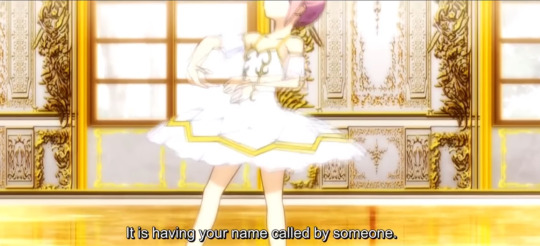

What is happiness without delicious food and sunbeams (sensory kama pleasures) or connections and existence (bhava)?
Madoka’s existence as a so called enlightened being in heaven (nirvana) goes against what makes us human beings, and her own happiness in turn.
The cessation of desire, a driving force for basic human emotions, does little but make you emotionless and numb. It disconnects you from relationships. What then is to differentiate you from emotionless Incubators?
Attachment and clinging can bring despair to people like Homura in Rebellion. But in the right circumstances, attachment, desire - it brings happiness and love. It is happiness and love. Without suffering, there is no joy. Is an existence without joy worthwhile?
#and then through this I realized the fairytale we may be getting inspo from next is Princess Kaguya#but that’s for another post ;)#madoka magica#pmmm#madoka kaname#homura akemi#Buddhism in Madoka#madoka analysis
105 notes
·
View notes
Text
Buddhism: Lost in Translation
Beware re-translations. The Buddha spoke a Sanskrit-related language. Sanskrit never went extinct. ‘Dukkha’ still means ‘suffering’, sorry. Many Western Buddhists try to manipulate the message, however slightly, to make it more appealing to Western tastes, but that says as much about Western tastes as it does about Buddhism. The issue in question, of course, is the First Noble Truth, which states…

View On WordPress
#Buddhism#dissatisfaction#dukkha#Existentialism#First Noble Truth#Google#Hardie Karges#India#language#meditation#Middle Path#nirvana#philosophy#rebirth#reincarnation#religion#Sanskrit#stress#suffering#Virtual Reality
0 notes
Text
反面
// The Shadow of a Tree
I can’t believe this week’s chapter forcefully changed my original plan for the day, and now here I am with this small essay (note: I wrote this before I started writing an essay, and I’m famous for underestimating how much I can yap).
This ramble contains spoilers up to Chapter 200.1 of To Your Eternity.
I won’t pretend to know exactly what Oima is cooking, because the story still isn’t done yet. But Chapter 200.1 is the only chapter that makes the most sense to me after a few chapters of Evangelion-esque what-the-hell-is this-even ever since Fushi and Left Hand Nokker played basketball with a magical ping pong ball.
To me, this chapter recontextualizes all the other chapters leading up to it.
Who Are The Nokkers, After All?
The war between Fushi and Nokkers has gone on for a long time, and by the Future Era, we’ve been led to believe that all Fushi lacked was the full kit of the Beholder’s godlike powers to squash them once and for all.
So! Fushi managed to gain that. What’s left is to destroy the Nokkers and save humanity, right?
Except that isn’t what they do. Instead, they offer a ball of unknown properties to Left Hand Nokker (who has taken on the form of the first host that has ever invited it to possess her, Hayase). When the Left Hand squashed it hard enough that it exploded on Fushi’s face, all they do is let the Left Hand beat them futilely as they regrow, get destroyed, and reform again.
Fushi doesn’t even try to fight. They just abuse their new Creator’s powers to… yap uninterruptedly. Curiously, despite Fushi inviting them to answer their question, the Left Hand Nokker is completely silent. It’s a very stark contrast to Fushi’s yapping.
Some readers on the Discord server voiced confusion and consternation about where this is going. They pointed out how Fushi’s previous pacifist approach (during the Modern Era) didn’t work; it was what led to Kaibara and their success in large-scale human extermination in the Future Era. Fushi, to them, made terrible decisions back then, and right now, they risk making the same sort of mistakes.
In their view, the right approach should be something like
Wholesale extermination of the Nokkers using godly powers. OR
Transforming Nokkers into humans.
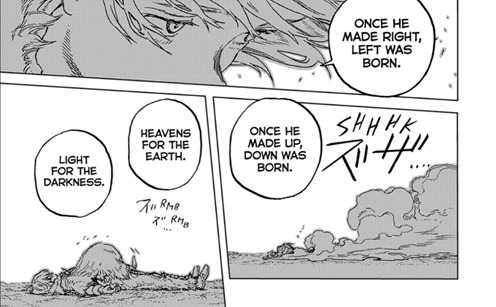
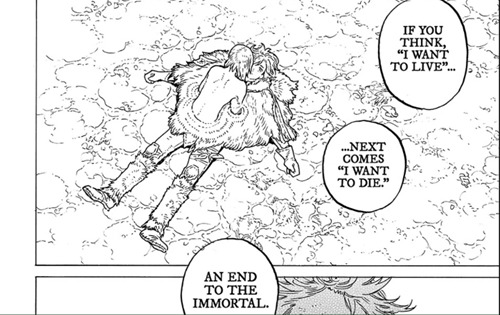
However, I think they are misunderstanding what the Nokkers are.
The Nokkers are metaphysical enemies.
They aren’t evil politicians or alien overlords or a legion of hell demons. Instead, they are the reaction to the Beholder and Fushi’s actions. They would not have existed if Fushi hadn’t existed.
In Buddhist philosophical lingo, the Nokkers and Fushi-Beholder are dependently co-arisen; the Nokkers are the shadow of the tree—when the tree exists, so too the shadow.
Using godly powers to exterminate every Nokker that exists right now will not remove them once and for all. Neither will turning them into humans. Nokkers are metaphysical enemies born from Fyes; as long as there is existence, they will always be Nokkers. The pool of Fyes will never run dry.
If you think, well, then I’ll just remove Fyes altogether!
What will you get? Living beings that don’t even seem right or alive... As seen in Chapter 199.1 and 199.2.

You cannot have existence without “nokkers.” So, you cannot have an extraordinary existence without extraordinary Nokkers.
Dependently co-arisen, the only way to remove the shadow of a tree is to remove the tree itself. The only way to exterminate these immortal, extraordinary Nokkers is to remove the immortal, extraordinary Fushi from existence. This is Fushi’s insight.
But what does it mean for us, the readers? What is the deeper allegory Oima might be painting?
Nokkers are representations of “dukkha”—dissatisfaction, suffering, unease.
That’s right! It’s Buddhist Philosophy time again! The nature of interdependence is that you’re always connected to someone who never stops yapping about Buddhism—the difference is how many degrees of separation.
As soon as one exists, one is bound to dukkha. Usually translated as “suffering,” dukkha is sometimes more accurately translated as “unsatisfactoriness,” because dukkha is far more prevalent than things we would call “all-out suffering.”
The easiest form of dukkha can be seen in the usual suspects: death, sickness, pain, work, etc. This is dukkha—"an aversion to physical suffering.” This is the dukkha Fushi was experiencing the most in the Past Era.
Even when you are living the best time of your life, reaping pleasure and undergoing no pain, you’ll still suffer dukkha when you remember how transient this moment actually is. It won’t last forever, and so you dread its passing. This, too, is dukkha—"unease.”This is the dukkha Fushi experienced a lot in the Modern Era.
Even if this “bestest time ever frfr no cap” truly lasts so much longer than you’d expected, you’ll still grow desensitized by its pleasures and begin to crave something else. This is dukkha—"a lack of lasting satisfaction.”This is the most prevalent in the Future Era, as exemplified by the residents of Kaibara’s society, especially Rabbit himself.
In TYE, all three forms dukkha are related to the Nokkers, and I think that’s by design. Sometimes the Nokkers are the perpetrators; sometimes they are the accessories or enablers. What they are within the story, therefore, is the narrative embodiment of dukkha.
In Buddhism, dukkha is one of the Three Marks of Existence—a.k.a. “No existence is without dukkha.” It is, therefore, as surefire as the shadow existing from a tree.
Sisyphus’ Mudball

Fushi says they will settle with this feud with one gift: the mudball. This is how they describe it:
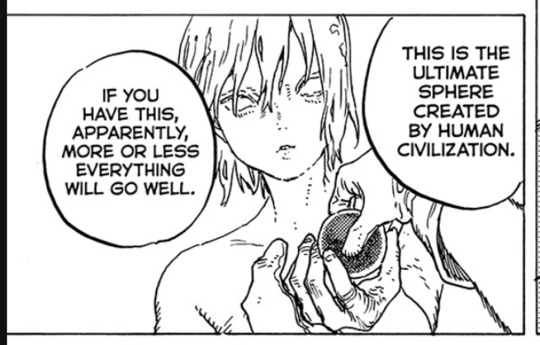
Left Hand takes the present, this “ultimate sphere of human civilization,” and…
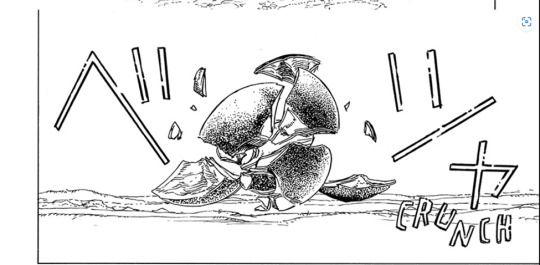
It deliberately drops it, cracking it.
My mate Brane from Discord interpreted it this way:
[…] Hirotoshi's ball (the mudball) is shiny, looks perfect but crumbles easily. Nevertheless people will put great effort into making one that's perfect(ly round), even though itll inevitably be destroyed. Making them brings people together and bridges the generations as adults pass the secret on to children. Mizuha and Left Hand both reject them while basically having a tantrum, metaphorically only being able to see the bad side to life rather than the brief perfection. In mizuha's case fushi ignored her because of his problems and she got worse. Here he's standing and laughing at the absurdity of it(.)
I have a bit more to add to the mudball’s symbolism as it’s paired with Fushi’s words.
For all of human history, we humans have toiled, creating civilization after civilization, to reduce the suffering so intrinsic to the human experience. We try to master nature, create art, dream of things and work toward bringing them about, learn, collect, and expand knowledge, invent incredible things and concepts, formulate such intricate theories and philosophy about how best to live and be happy.
Imagine all of that (and so much more) is in this mudball—“the ultimate sphere created by human civilization”—that Fushi presents to Left Hand Nokker.
To me, what they were asking was essentially”
“Can this be enough to overcome dukkha?”
The Left Hand responds by dropping it and cracking it—a rebuke on our collective effort. No, no matter how much we work, how much human civilization has achieved, how improved our tech may be, how much nature we have mastered—
None of it can satisfy a Nokker. None of it will ever overcome dukkha.
It was supposed to be a bleak response. Something that makes us let out a collective, “here we go again” sigh.
And yet, Fushi laughs.They’re laughing jovially in a way that makes me suspect they knew the answer all along. How absurd it would have been if all of that were enough to remove dukkha from life!
This, I think, is the laugh of someone enlightened. So what if the mudball cracked? They will just make it again. What if our civilization—and/or the parts that form it—aren’t working well enough? We’ll just keep trying and improve again.
Accept that there is no existence without dukkha. Live with dukkha. Live in spite of dukkha. Live without fear of dukkha.
When you remove one dukkha, another will arise. It’s alright; take comfort in that transient moment of you making it and do it again. Strive even when there’s more dukkha to come.
It is Sisyphus pushing up the rock in Albert Camus’ retelling—that’s the nature of Fushi’s battle with the Nokkers. Fushi wanted to look for ways to stop it forever, but now they understood. An eternal existence would mean an eternal interaction with the Nokkers. An eternal life would mean an eternal engagement with dissatisfaction, unease… suffering.
To that, Oima (probably) says,
"One must imagine Fushi happy."
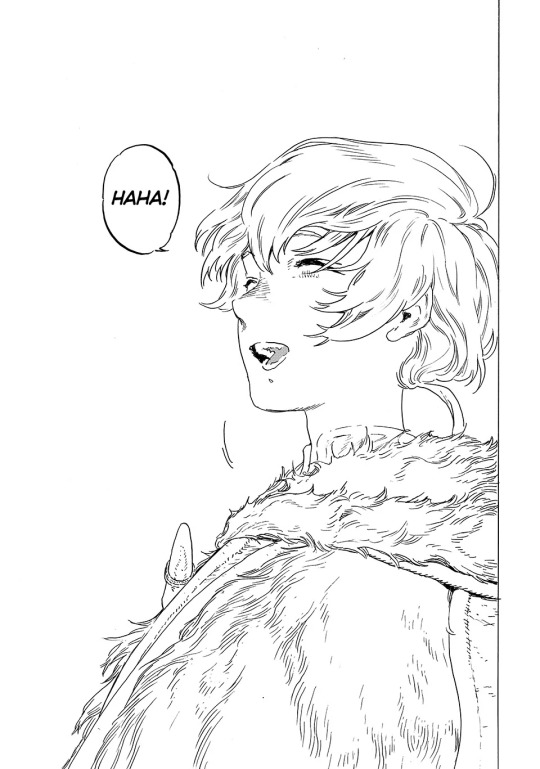
Thank you for reading my ramble.
------
Some Extras For The Existentialist
With how existentialist Chapter 200’s direction is, it makes me understand Rabbit’s deal a little more… maybe?
When the fight for the magical ping pong ball began, Rabbit said some pretty cynical, nihilistic shit—life is pretty damn meaningless, so kill us; it doesn’t matter.
But we later see Rabbit crying Naruto-ly (as in, with snots) over Abel’s death. It’s probably the only time he had ever shown any emotion without the cynical, ironic coat he always puts on. He had cared about Abel (who isn’t even related to him by blood and was born naturally, without a tagchip) all along, and in the past, had even sometimes helped Doro in fighting the tyranny of Kaibara society.
Why would a (pessimistic) nihilist do all of that if he had not believed it would mean anything?
I think Rabbit is meant to represent people who are caught between existentialism and pessimistic nihilism. He’s presumably lived long enough, without pain and any ambition other than “do the bidding of his superiors”, that any meaning of life has become obtuse to him (oho, it’s dukkha again!).
He failed to realize that he had, by existing, created meaning for himself already.
One of the meanings we humans can create is through forming relationships with other people—recognizing and relishing in the interdependence of our common existence. Rabbit had not known he had discovered such meaning for himself until Abel was gone.
It was something his tagchip could never provide, and therefore it was far more impermanent and transient than all of it. And yet, this is precisely why Abel was so meaningful.
#Thanks to the one fella in Discord for thinking aloud; it really made my brain turn#I disagree with you completely but it's still really fun to read your thoughts#This essay really ruined my plan for the day damn it#I mean now that I'm here I might as well hang around and reply to people#who knows when will I show up again next time#I just wish I have more time#I've got some personal projects I wanna work on and it's eating this tumblr time too#fumetsu no anata e#to your eternity#tye spoilers#tye#fushi#fnae manga#fnae spoilers#Kafka's Buddhism hammer to all nails
12 notes
·
View notes